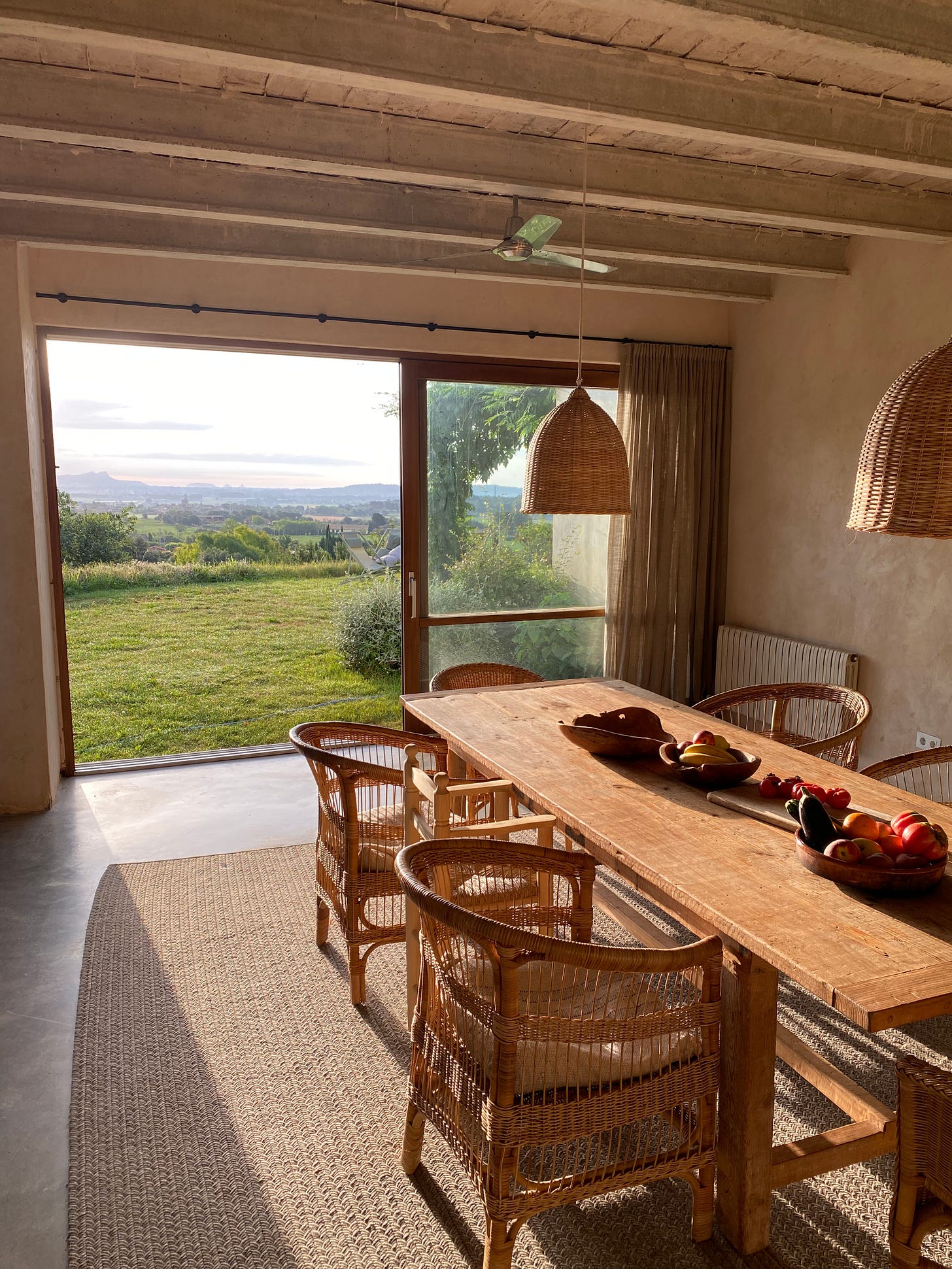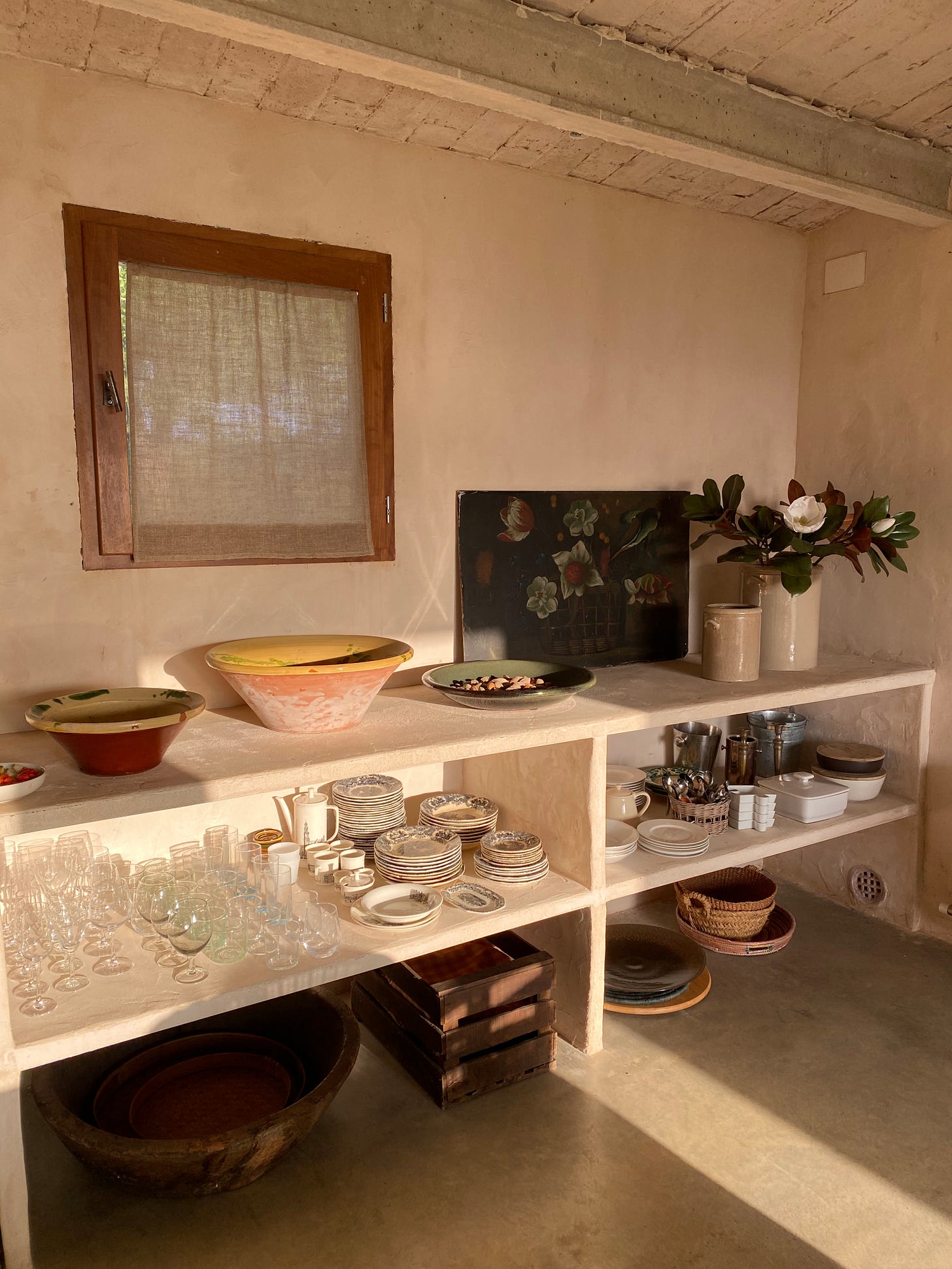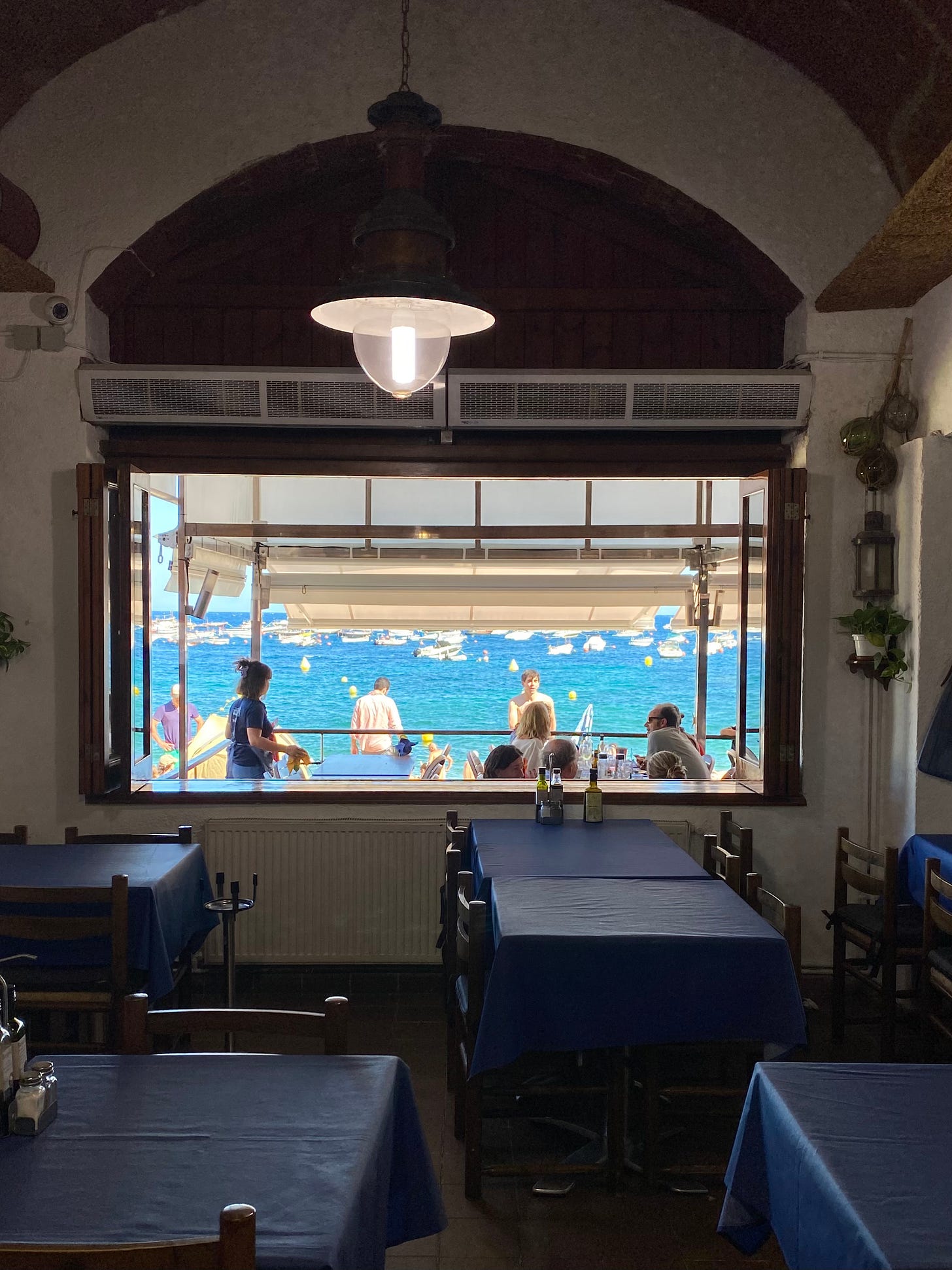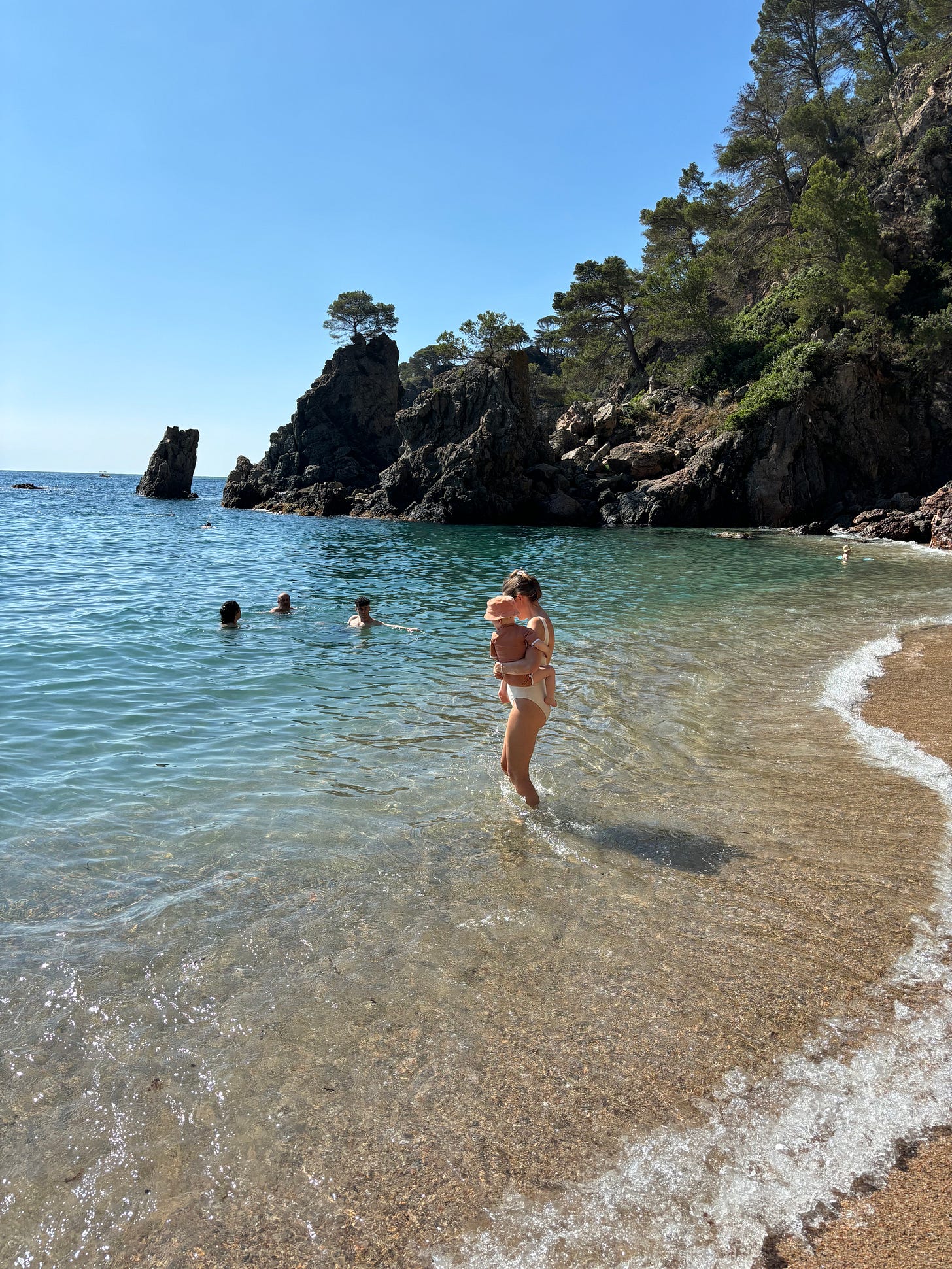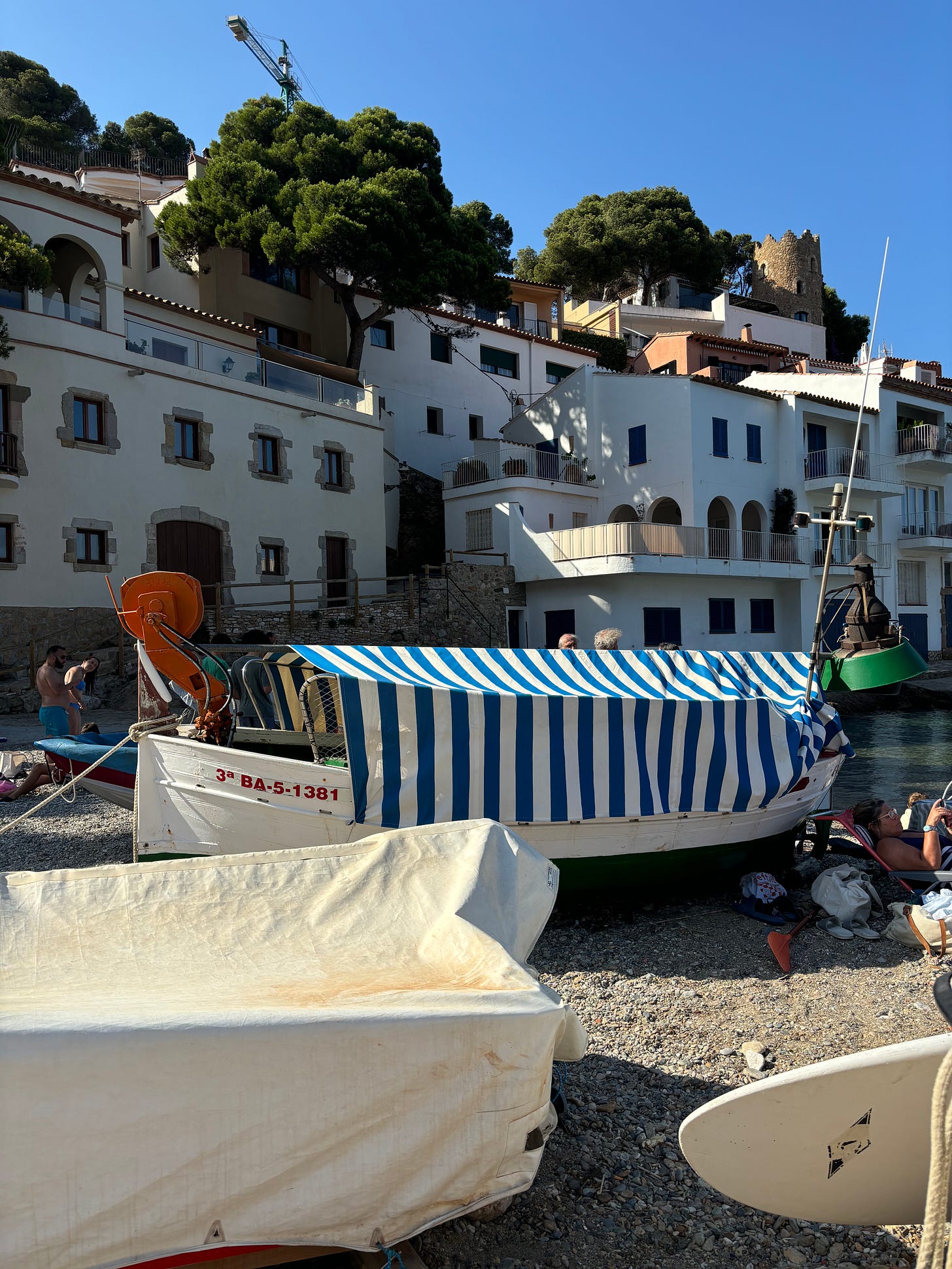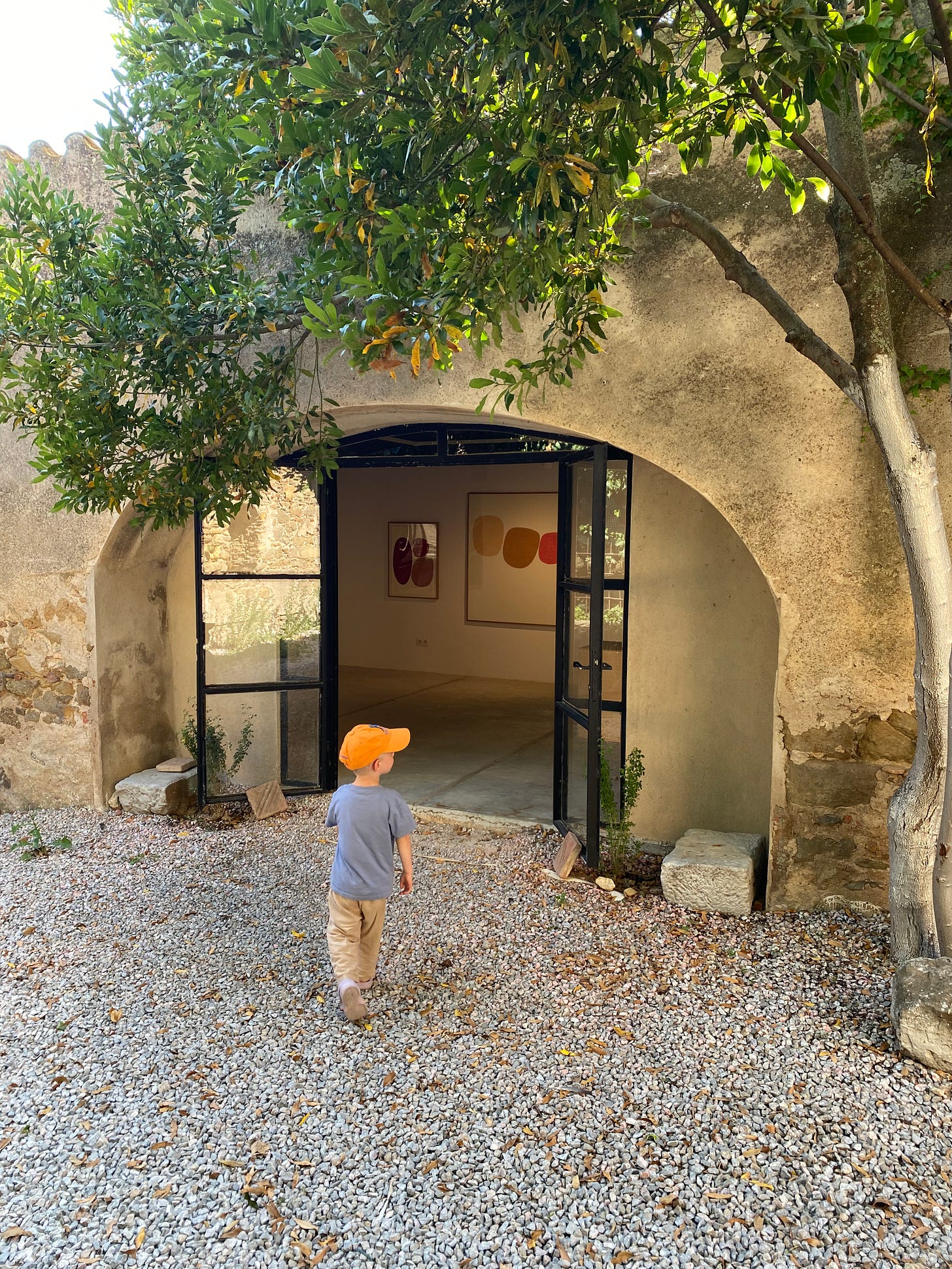Empordà: A Summer Vacation to Catalonia’s Hidden Treasure
From charming villages to stunning beaches, tips for navigating Spanish mealtimes, and immersing in art at Palau de Casavells
Hi everyone! I’m writing this on yet another grey and freezing winter day in Berlin. By the time the first month of the year is nearly over, this weather always starts to get to me. To escape the cold, we've spent the last two Januaries in Spain—first in Barcelona, and last year, we added Cadaqués. These trips have made me fall in love with Catalonia—not just for its food, design, and architecture, but also for its year-round unbeatable weather and vibrant, positive vibe. It was also the destination of my younger son’s first trip when he was just six weeks old—a memory that will always stay with me.
After such great experiences in Catalonia during the winter, we decided to return for our summer holidays in early July last year. I always find it a bit tricky to locate charming, affordable homes for summer vacations. It might be our particular taste in interiors, or perhaps because we tend to look for smaller homes that can accommodate two to four adults and two children, while most listings cater to larger groups of up to 12. When I had almost given up on my search, I remembered a note I’d saved on my phone titled “Houses in Spain,” probably something I had stumbled across on Instagram and saved for later. That note led me to the website Viu Empordà, and before I knew it, I had booked Can Pardalet the very same day.
And hands down, this is how I first heard of Empordà. It’s essentially the backcountry of Costa Brava, the coastline stretching between Barcelona and the French border. But it’s also much more than that—a captivating region where rugged hills meet the Mediterranean Sea. The area is dotted with charming medieval villages, while the coastline features dramatic cliffs and serene coves. With its mild climate and natural beauty, Empordà offers the perfect blend of mountains, sea, and countryside. Plus there are some interesting cultural highlights.
From Berlin, we flew into Barcelona, rented a car, and drove about 1.5 hours north (or, with Barcelona traffic, closer to two hours). Can Pardalet is a three-bedroom house located in the small, quiet village of Rupià, blending local authenticity with modern interiors. The house, once a stable, now features a double-height living space with large windows that offer spectacular views of the Baix Empordà. Nestled in the hills, it provides complete privacy, yet it’s only a 5-minute walk downhill to the village, where you’ll find a small café/shop, a butcher, and a bar.
When traveling as a family, we always prefer staying in a house or apartment. Once our kids started eating solids—or, at the latest, when we had our second child—hotel stays became a thing of the past (or only for a night or two at most). Having a kitchen and the freedom to prepare healthy meals whenever the kids are hungry is essential. It’s much easier than scrambling to find a restaurant and hoping to find something they’ll actually eat. The biggest challenge with dining out in Spain, though, is the opening times. Most restaurants don’t open until 8 pm, while my kids usually eat dinner by 6 pm. The same goes for lunch—restaurants don’t open until 1 pm, but my kids prefer to eat by noon at the latest, and the little one naps at 1 pm. I like to keep their routines as consistent as possible while we’re travelling, so eating out can be a bit tricky. During that trip, we found a solution by booking the latest possible lunch slot at 4 pm, which worked as an early dinner for us. We tried this at Fiego in Calella de Palafrugell, an old-school, cave-like seafood restaurant right on the beach (Platja del Port Pelegri). Afterward, we took a quick dip in the sea—my idea of a perfect day.
Beach-wise, El Golfet in Calella de Palafrugell is absolutely stunning, and Sa Tuna is a charming village with a lively but lovely pebble beach. After spending the afternoon there, we managed to stretch the kids' hunger until a 7 pm dinner at the newly opened PIZZABAR, which was fun and easy. We’re already eager to return to Sant Feliu de Boada—it’s such a picture-perfect little village.
We also treated ourselves to a more upscale lunch at Villa Mas in S’Agaró, which is otherwise quite touristy. Villa Mas is renowned for its extensive wine list, featuring exclusively natural wines. I should mention that we were traveling with my in-laws, which made this long lunch possible, as the grandparents were kindly looking after the kids.
I also recommend spending an afternoon in Girona, where the kids can enjoy ice cream from Roli or Rocambolesc Gelateria (or both!), while the adults stop by Safo wine bar.
We went to La Bisbal several times, a town known for its tradition of handmade ceramics, and the lively Friday market there is definitely worth a visit. Speaking of markets, there’s a farmers’ market every day in one of the nearby villages with excellent produce.
A must-visit is Palau de Casavells, an outpost of Alzueta Gallery, as well as the Gala Dalí Castle and Museum in Púbol. The latter is a great alternative to the long drive to Cadaqués to see Casa Dalí. But if you're up for the trip, Cadaqués is one of my favourite places in the world—and definitely deserves its own edition of this newsletter.
See you in the next edition—safe travels,
Franka
P.S. Let me know if there are any specific destinations you'd like me to cover in my upcoming newsletters. This year, we’re (sadly) skipping our annual January trip to save some time off for a bigger vacation in March. Since we're not traveling until then, I'd be happy to revisit some of our past trips in the meantime.






